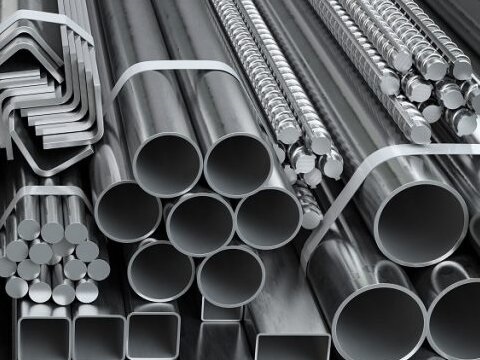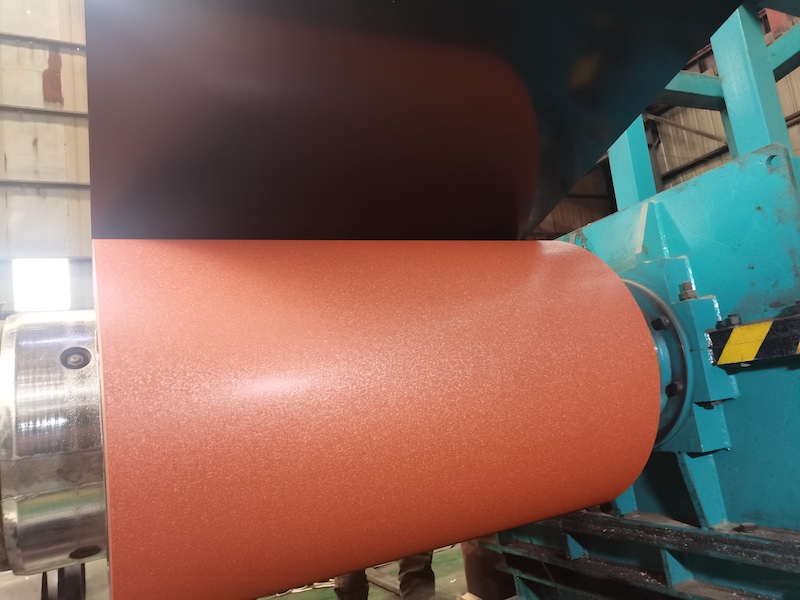Analysis of Common Problems for Stainless Steel
CATALOG
- Definition of Stainless Steel
- Five major metallographic structures of stainless steel
- Main Characteristics Of Stainless Steel Series
- Analysis of Core Grade Stainless Steel
- Is Stainless Steel Absolutely Rust Free?
- Is Non-magnetic Stainless Steel Really 304?
- What’s Special About Food-grade Stainless Steel?
- How To Identify Counterfeit 304?
- How to choose SS materials for different scenarios?
- Stainless Steel Application Areas
- HS Code For Common Stainless Steel Products
- Which Is Better 304 or 316 Stainless Steel?
- How Do I Know If My SS Is 304 or 316?
- Which Grade Stainless Steel Is Best?
- What Are Disadvantages Of Stainless Steel?
- What Are The Disadvantages Of 316 Stainless Steel?
- What Factors Weaken Stainless Steel?
Definition of Stainless Steel
Stainless steel, also known as stainless acid-resistant steel, water-copper iron, and in Taiwanese, white iron, is a high-chromium alloy steel that remains passive, corrosion-resistant, and rust-proof in the atmosphere and in corrosive media such as acids, alkalis, and salts. It typically contains other elements such as nickel, molybdenum, vanadium, manganese, and tungsten. Chromium is the most important metallic element in determining stainless steel’s rust resistance. It achieves its “rustproof” properties by forming a dense passive film of chromium oxide (Cr₂O₃) on its surface, which isolates it from corrosive media. This passive film is self-repairing if damaged, but chloride ions, acids, or mechanical damage can compromise its integrity.
Five major metallographic structures of stainless steel
| Tipo | Representative brand | Key Features | Applicable scenarios |
| Austenite | 304/316 | Non magnetic, high toughness, easy to weld | Food equipment, chemical pipelines |
| Ferrite | 430 | Magnetic, stress corrosion resistant, low cost | Home appliance casing, architectural decoration |
| Martensite | 410/420 | High hardness, heat treatable strengthening | Cutting tools and bearings |
| Dual phase steel | 2205 | High strength, resistant to chloride corrosion | Offshore platforms, desulfurization equipment |
| Precipitation-hardening | 17-4PH | Ultra high strength (HRC44) | Aviation parts, valve components |


The role of key alloying elements
Chromium (Cr): ≥ 10.5% forms a passive film, and the corrosion resistance increases by 1.5 times for every 5% increase.
Nickel (Ni): Stabilizes austenitic structure (8% in 304), enhances acid resistance and ductility.
Molybdenum (Mo): enhances resistance to pitting corrosion (2-3% in 316), suitable for marine environments.
Main Characteristics Of Stainless Steel Series
| Series | Typical brand | Magnetism | Corrosion Resistance | Main application scenarios |
| 200 series | 201/202 | none | moderate | Industrial framework, interior decoration |
| 300 series | 304/316 | none | excellent | Food equipment, medical devices |
| 400 series | 430/410 | have | good | Home appliance panels, automotive components |
Analysis of Core Grade Stainless Steel
304 stainless steel: a food grade benchmark, with a combination of 18% Cr+8% Ni (i.e. 18-8 steel), resistant to acid, alkali, and oxidizing media, but prone to pitting corrosion in chloride ion environments. Applicable scenarios: tableware, storage tanks, building decoration.
316 stainless steel: Adding 2-3% molybdenum on top of 304 significantly improves its resistance to chloride corrosion and is known as “marine steel”. Medical grade standards for implantable devices and seawater equipment.
430 stainless steel: 16-18% Cr ferritic steel, nickel free, resistant to nitric acid but not hydrochloric acid. The cost is only 60% of 304, widely used in washing machine inner tubes and range hood housings.
201 stainless steel: a nickel saving steel made by replacing nickel with manganese (5-7% Mn), which has weaker corrosion resistance than 304 and is prone to rusting in humid environments. Only recommended for structural components in dry environments.
Is Stainless Steel Absolutely Rust Free?
Stainless steel is an alloy containing 10.5% or more chromium. A chromium oxide film forms on its surface to prevent rust. However, rust can occur due to environmental corrosion (such as salt spray, acid and alkali), surface contamination (organic residues, metal dust), or substandard material (insufficient chromium and nickel). 304 stainless steel is susceptible to pitting corrosion from chloride ions in coastal areas, while 316 stainless steel, due to its molybdenum (Mo) content, is more resistant to salt corrosion.
Why are stainless steel welds prone to corrosion?
High welding temperatures cause chromium carbide precipitation (intergranular corrosion). Ultra-low carbon steel (such as 316L) should be selected or post-weld solution treatment should be performed.
Is Non-magnetic Stainless Steel Really 304?
304 may produce weak magnetism due to structural stress after processing (such as stamping sinks), while 430 ferritic stainless steel is naturally magnetic. Magnetism cannot be used as the only criterion for determining the authenticity of the material.
What’s Special About Food-grade Stainless Steel?
Key: It must be both corrosion-resistant and easily sterilizable. Therefore, 304/316 stainless steel undergoes electrolytic polishing to create a smooth surface, inhibiting bacterial growth and meeting food contact standards.
Avoidance: Not all 304 stainless steel is food-grade—it’s important to verify the surface treatment report issued by the steel mill.
How To Identify Counterfeit 304?
Three-step verification method
- Grain Observation: Authentic 304 steel has straight and uniform brushed grain, while counterfeit steel has distorted pickling grain.
- Chemical Solution Testing: Add 304 reagent → Authentic steel will appear light yellow (nickel ≥ 8%), while counterfeit steel will appear purple-red (excessive manganese content).
- Quality Assurance and Traceability: Laser melting reports with steel mill batch numbers are required.
How To Choose SS Materials For Different Scenarios?
For coastal buildings/medical equipment, we recommend 316L (chloride ion corrosion resistance);
For high-temperature boilers, we recommend 310S (high chromium nickel oxidation resistance);
For high-strength parts, we recommend 17-4PH (precipitation hardening, HRC 44).
Stainless Steel Application Areas
Traditional Fields
Architectural Decoration: 304 brushed steel is used for curtain walls, 316 steel for beachfront handrails, and the coloring process eliminates fingerprint residue.
Kitchenware Manufacturing: The three-layer composite structure (stainless steel-aluminum-stainless steel) increases the thermal conductivity of cookware by three times, and the pre-curing process prevents sticking.
Medical Devices: 316L (ultra-low carbon) is the preferred material for surgical instruments, eliminating the risk of intergranular corrosion.
Emerging Fields
New Energy Vehicles: Duplex stainless steel 2205 is used for battery casings, boasting 30% greater strength than conventional steel and resistance to electrolyte corrosion.
Environmental Protection Equipment: Waste incineration plants use high-molybdenum steel 904L (6% Mo content) to resist corrosion from sulfur-containing flue gases.
Hydrogen Energy Industry: Hydrogen storage tanks utilize austenitic-nitrogen-strengthened steel, offering a hydrogen embrittlement resistance of up to 70 MPa.
HS Code For Common Stainless Steel Products
| Product Category | Common HS Code | Product Description (For reference only) |
| Stainless Steel Plate | 7219340000 | Cold-rolled stainless steel plate with a thickness between 0.5 mm and 1 mm (not further processed except cold rolling, width ≥ 600 mm) |
| 7219350000 | Cold-rolled stainless steel plate with a thickness less than 0.5 mm (not further processed except cold rolling, width ≥ 600 mm) | |
| 7219310000 | Cold-rolled stainless steel plate with a thickness ≥ 4.75 mm (not further processed except cold rolling, width ≥ 600 mm) | |
| 7219339000 | Other cold-rolled stainless steel sheets 1mm< thickness < 3mm (width ≥ 600mm without further processing except for cold rolling) | |
| 7220900000 | Stainless steel strip, hot-rolled or cold-rolled with further processing, width < 600 mm | |
| Stainless Steel Pipes and Accessories | 7306400000 | Stainless Steel Pipes (e.g., 304 stainless steel capillary tubes, welded pipes) |
| 7307210000 | Stainless Steel Flanges | |
| 7307220000 | Stainless Steel Threaded Elbows, Bends, and Sockets | |
| 7307290000 | Other Stainless Steel Pipe Accessories (excluding flanges, threaded elbows, bends, sockets, and butt-weld fittings), such as connectors and tees | |
| Other Stainless Steel Products | 7222400000 | Stainless Steel Rods (e.g., hot-rolled 304 stainless steel round rods) |
| 7223000000 | Stainless Steel Wire (e.g., 304 stainless steel wire) | |
| 7318140090 | Stainless Steel Screws/Bolts (e.g., self-tapping eyebolts) |
Which Is Better 304 or 316 Stainless Steel?
The better choice between stainless steel 304 and 316 depends on the application. 304 is generally better for everyday use and cost-effectiveness, while 316 is superior for harsher environments with high chloride or acid exposure. 316 contains molybdenum, which enhances its corrosion resistance, especially in marine or chemical settings.
In essence, 304 is a good all-around choice for general use, while 316 is the preferred option for demanding environments requiring superior corrosion protection.
How Do I Know If My SS Is 304 or 316?
The simple answer is that 304 contains 18% chromium and 8% nickel, while 316 contains 16% chromium, 10% nickel, and 2% molybdenum.
For ordinary consumers or for quick on-site evaluation, the preferred method is “316 solution,” which is low-cost, fast, and provides relatively reliable results.
For foreign trade procurement or project acceptance, the “Material Test Certificate (MTC)” must be reviewed and the furnace batch number verified. For large orders, spectrometer testing is the final means of arbitration.
Which Grade Stainless Steel Is Best?
The 304 stainless steel alloy is the most widely used and versatile grade in the stainless-steel family. It comprises roughly 18% chromium and 8% nickel. 304 stainless steel is highly resistant to atmospheric corrosion, water, and many chemicals. Notably, it doesn’t contain any molybdenum.
What Are Disadvantages Of Stainless Steel?
- It can be very expensive.
- It is not as durable as some other materials.
- It can be difficult to clean.
- It is susceptible to scratches and dents.
- It is not magnetic, so it cannot be used with magnets.
What Are The Disadvantages Of 316 Stainless Steel?
High Cost: Due to its higher alloy content, 316 stainless steel can be more expensive than other types of stainless steel, including the more popular 304 stainless steel.
Poor Machinability and Formability: If you require high levels of machinability and formability, 316 stainless steel isn’t the best choice compared to other types of stainless steel.
What Factors Weaken Stainless Steel?
Many types of stainless steel alloys are susceptible to severe pitting corrosion when exposed to chloride-rich environments (e.g., salt, seaside).
Conclusión
If you have any other questions, please fill in the form below. Welcome to consult and order stainless steel and related products.

